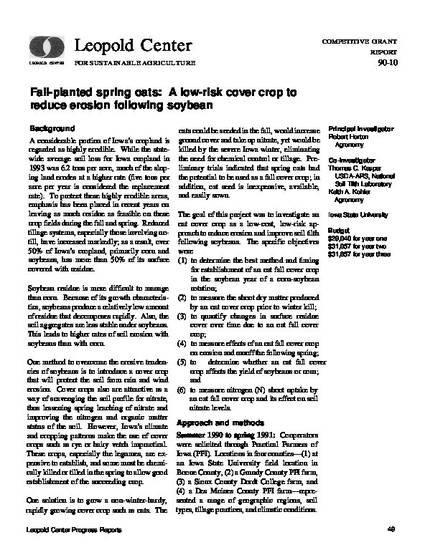
Article
Fall-planted spring oats: A low-risk cover crop to reduce erosion following soybean
Leopold Center Completed Grant Reports
Project ID
1990-10
Abstract
A considerable portion of Iowa's cropland is regarded as highly erodible. While the statewide average soil loss for Iowa cropland in 1993 was 6.2 tons per acre, much of the sloping land erodes at a higher rate (five tons per acre per year is considered the replacement rate). To protect these highly erodible areas, emphasis has been placed in recent years on leaving as much residue as feasible on these crop fields during the fall and spring. Reduced tillage systems, especially those involving notill, have increased markedly; as a result, over 50% of Iowa's cropland, primarily corn and soybeans, has more than 50% of its surface covered with residue.
Principal Investigator(s)
Robert Horton
Co-Investigator(s)
Thomas C. Kaspar, Keith A. Kohler
Year of Grant Completion
1994
Disciplines
Citation Information
Robert Horton, Thomas C. Kaspar and Keith A Kohler. "Fall-planted spring oats: A low-risk cover crop to reduce erosion following soybean" (1994) Available at: http://works.bepress.com/robert-horton/8/
